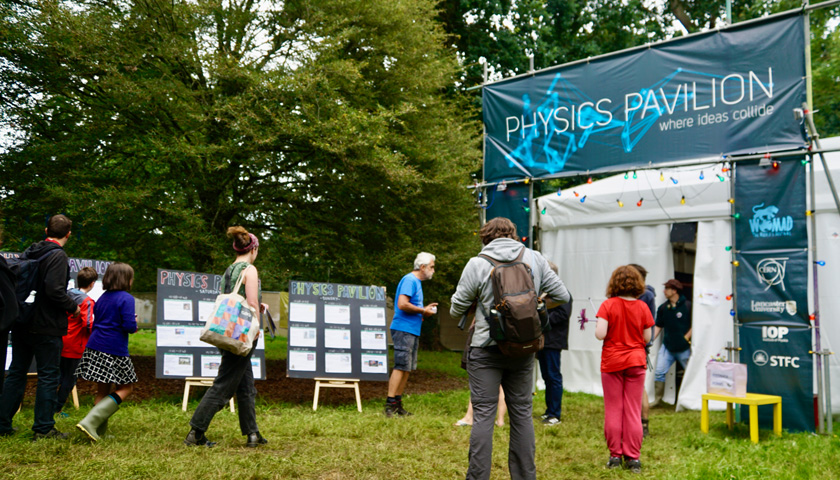WOMAD festival celebrates music, arts and dance from all around the world. It is the brainchild of musician Peter Gabriel who launched it way back in 1982. Over the years it has expanded to include many areas of interest, but until the introduction of the Physics Pavilion in 2016, hadn’t included much science.
After a highly successful initial Pavilion in 2016, we were asked to return bigger and better for subsequent years. The total footfall in 2016 over 3 days was ~4000, larger than the tent capacity allowed because for some sessions we removed the side of the tent for more people to participate. Only three one-hour sessions were below full capacity, and then only just. From 2017 it rose to ~6400 (partly because of the workshop and gazebo being added, as described below, and partly because of rearrangement of the main tent capacity).
We have a dedicated tent for talks, called the Pavilion, running from earlier in the morning until later in the evening. In all, we run 24 hours of talks in a dedicated tent with 200 capacity. The talks are 30-40 mins with interaction, followed by questions and turn-around time. There is a mixture of accessible talks from academics mixed with ‘celebrity’ slots with a science focus, and features tuned to the venue, such as Physics from the Bathtub making the connections between music and quantum mechanics. Celebrity guests have included Helen Arney (of the Festival of the Spoken Nerd and QI), Robin Ince (from the Infinite Monkey Cage and his own stand-up tours) and Steven Moffat (then show-runner and chief write for Doctor Who and Sherlock) in previous years.
In parallel, we have a separate smaller tent, called the Lab, where we run workshops, with a capacity for ~40 participants in each session. This tent allows for a wider variety of workshops. Workshops are of variable length. We are supported in the lab activity by CERN, and by Adaptavist, who run Devoxx4Kids for Schools and other activities to promote programming; we are developing new and bespoke versions of their activities with a distinct emphasis on the Physics. The Lab includes new workshops designed explicitly for the very young attendees. It has featured the 'soft accelerator' designed through the Cockcroft with the blind experience in mind.
The third area, now formally established, is an open gazebo, allowing less formal interaction with the crowds. This features activities such as virtual tours of the CERN underground areas, a camera obscura, a booth for asking questions of a physicist etc. It both attracts passers-by and entertains those awaiting the talks and workshops.







